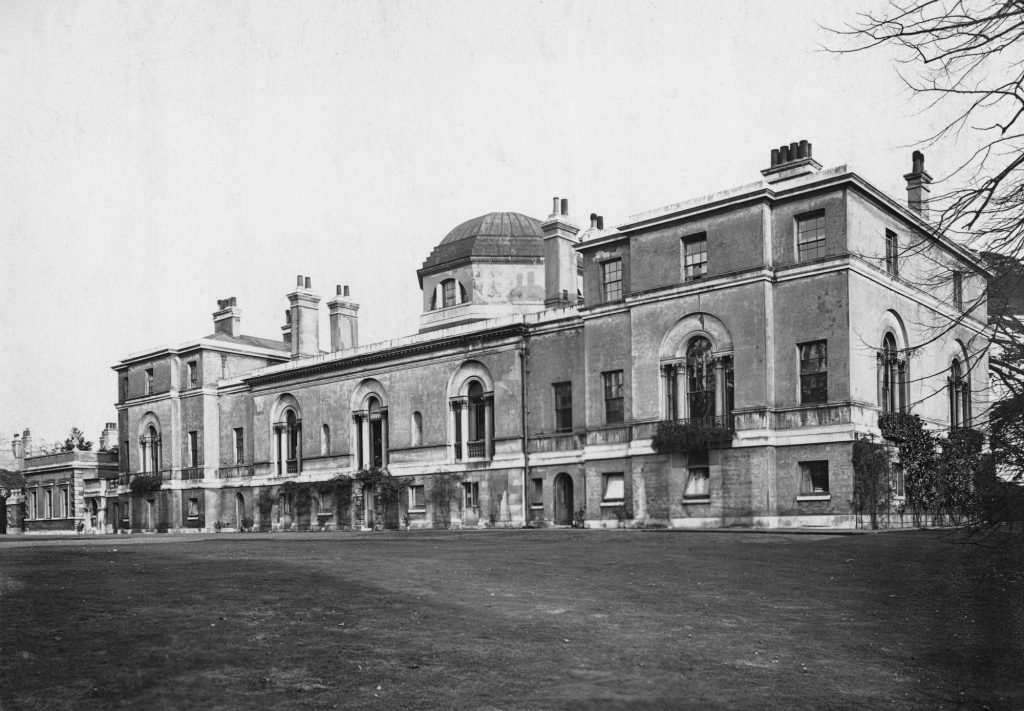Many of the patient notes for Chiswick House available to view online in the Wellcome Collection archives are indecipherable. This means when you find one that you can actually read, it can feel doubly frustrating for the researcher if those notes then prove tantalisingly inconclusive.
One such case is that of Mrs Violet H Thompson. This 41 year old woman was admitted to Chiswick House on the 6th of April, 1922. For a few months prior to this she was said to have been showing signs of emotional instability and threatening to commit suicide. The doctors suspected her symptoms derived from a period of prolonged stress and insomnia. She was also considered a potential danger to others, in particular nurses and some doctors, who she seemed particularly antagonistic towards as the result of some undefined obsession.
The Medical Certificate describes events prior to her being admitted. She was already under the care of nurses at her home which she seemed to strongly resent. She was said to pretend to be sleeping if nurses entered the room. On 5th April she was found lying on the drawing room floor alternately crying and laughing violently, and threatening if she did not get her own way ‘to do herself in’ as she had ‘nothing to live for’ . When an unspecified injection was administered this was said to have made her very violent. She then apparently threatened to strangle herself with a stocking and stated that she hated her nurses and would not have them in the house. On the 3rd of April she was said to have run upstairs, locked herself in a room, and refused to speak with anyone.
On 6th April she was brought in a car to Chiswick House by three nurses. The medical statement on admission described Violet as ‘a tall good looking woman…seeming in good health (and) composed in manner’. She initially refused to go to her room as the fire was burning too brightly, but when this was put out for her she then accepted the room.
During her two week stay at Chiswick House the doctor’s notes describe her as on occasion pleasant and calm, and at other times unreasonable. They describe her as being adept at rationalising her behaviour, but in a childlike manner, while continuing to be convinced that everyone else was in the wrong, while she was right. Moreover, the notes state that while she sought to portray a good impression in her daily speech, she remained adamant that there was nothing the matter with her, and that she was there due to the ‘spite of a little doctor.’ However, she also admitted threatening to take her own life, and said that she could have carried this out at any time but had not so far done this for fear of causing distress to her boys.
Violet’s complaints and issues with her treatment by the doctors were chauvinistically dismissed in notes that described her as ‘egotistical (with) no insight into her condition and was not amenable to reason.’ She would ramble vaguely about her affairs and at one point discarded her wedding ring, accusing her husband and family of treating her like a ‘dog’ and insisting that she was not going to return to them. Instead she demanded to be placed in the care of her brother. When her brother did pay her a visit this was said to have improved her mood considerably and the notes describe her as becoming once again ‘reasonable and amicable.’
(T)he doctors…described her as ‘egotistical (with) no insight into her condition and…not amenable to reason.’
By the time Violet’s husband came to check up on her the doctors informed him that they did not take her threats of suicide seriously, and felt she no longer posed a threat to herself or others, and therefore could be safely discharged. Nevertheless, the discharge note still describes her as unstable and unreasonable, with a tendency to lose her temper if she did not get her own way. On her husband’s authority she was allowed to leave and, it was noted, did not offer any thanks and was curt to the nurses.
The records do not indicate whether this patient was actually diagnosed with any medical condition and some of the doctor’s notes seem quite dismissive and scathing in their opinions. I wonder why Violet was in the care or nurses at home prior to her admission to Chiswick House. Were her husband and family the root of the problem, or were they simply trying help her during a time of acute distress? Sadly, like so many who passed through the doors of this establishment, we will probably never know whether she was able to overcome her problems, or what ultimately became of her after her discharge.









